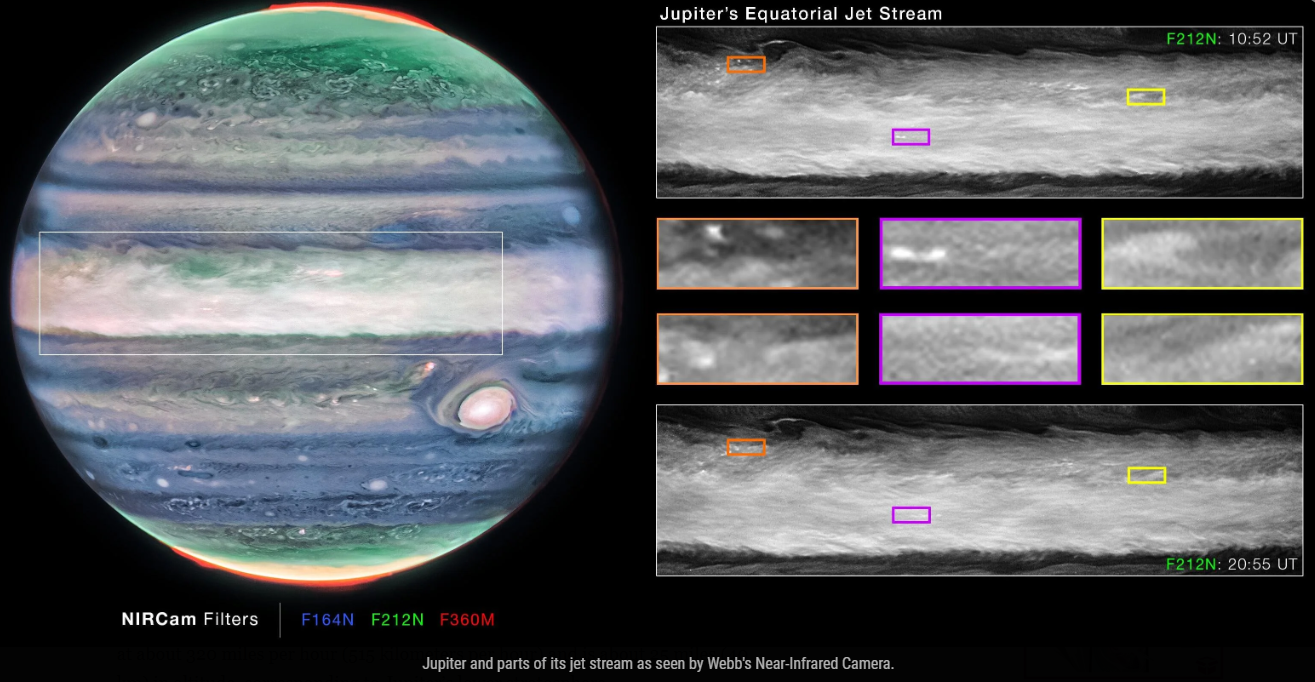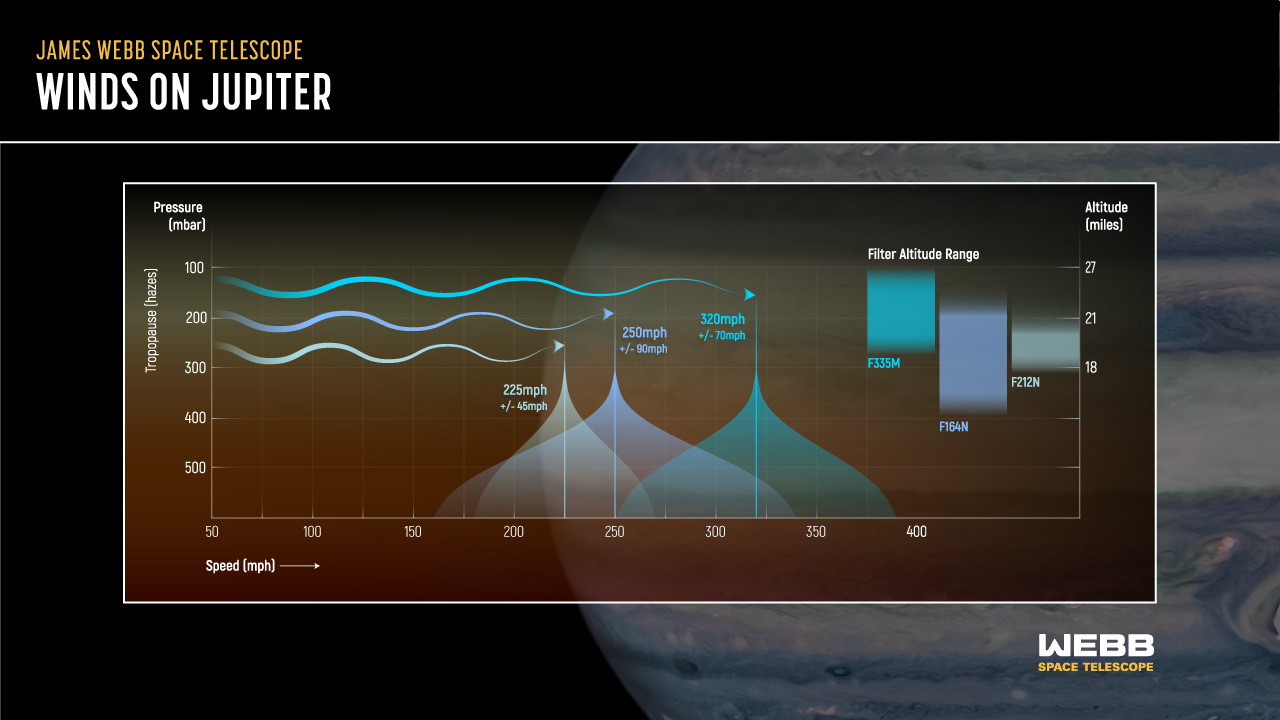Webb Space Telescope Discovers Jupiter's Mysterious High-Speed Jet Stream
The Webb space telescope discovers Jupiter's mysterious high-speed jet stream. The Webb Space Telescope discovered a powerful jet in July 2022 that was rushing over Jupiter's equator, the largest planet in our solar system. The jet is roughly 25 miles (40 km) above the surface of Jupiter and moving at a speed of about 320 miles per hour (515 kilometers per hour).
Author:Rhyley CarneyReviewer:Paula M. GrahamOct 23, 20234.8K Shares82.9K Views

The Webb space telescope discovers Jupiter's mysterious high-speed jet stream. The Webb Space Telescope discovered a powerful jet in July 2022 that was rushing over Jupiter's equator, the largest planet in our solar system. The jet is roughly 25 miles (40 km) above the surface of Jupiter and moving at a speed of about 320 miles per hour (515 kilometers per hour).
The presence of east-west jets in the atmosphere of the gas giant was known to astronomers, but examination of the recently discovered rapid jet revealed that Jupiter's gaseous interiors may be more dynamic than previously believed. Nature Astronomyhas published the team's investigation of the jet.
The finding of this jet is providing new information about how the layers of Jupiter's infamously tumultuous atmosphere interact with one another and how Webb is uniquely able to track those features, according to the James Webb Space Telescope's official website.
"This is something that totally surprised us," said Ricardo Hueso of the University of the Basque Country in Bilbao, Spain, who is also the paper's primary author. "What we have always seen as blurred hazes in Jupiter's atmosphere now appear as crisp features that we can track along with the planet's fast rotation."
After a lengthy commissioning process, the Webb Space Telescope was launched from French Guiana in December 2021 and has been conducting scientific observations of the universe since July 2022. Since the start of its scientific campaign, Webb has produced some of its most evocative and perceptive photos.
With a detection range that reaches back over billions of years of cosmic history, Webb's keen infrared gaze can spot ancient light. However, it hasn't made it unfamiliar to our close planetary neighbors; in August 2022, the space observatory photographed the iridescent aurorae on Jupiter's poles, and this year, it recorded images of the rings surrounding Uranus and Saturn.
Jupiter's Atmosphere (Illustration)

Webb's Near-Infrared Camera captured the most current photographs of Jupiter that revealed the jet stream, which showed that the jet's motion had caused some of Jupiter's atmosphere to be disturbed. Wind shears are regions in the image where the wind speeds in the planet's atmosphere alter based on their height and distance, allowing for the tracking of the jet. A number of pullouts from the NIRCam image show features in Jupiter's equatorial zone that the jet caused.
According to the researchers, the discovery of the jet near Jupiter's tropopause—the area at the edge of its troposphere—suggests that the planet's atmospheric circulation around its equator is more comparable to that of Saturn than was previously thought.
Future missions will acquire a close-up view of the Earth, whereas Webb can only reveal parts of Jupiter's physics from a distance. The ESA's Jupiter Icy Moons Explorer (JUICE) will observe the gas giant and its ocean-containing moons Callisto, Europa, and Ganymede, which astrobiologists believe could be potential habitats for extraterrestrial life. NASA's Juno spacecraft has been photographing Jupiter and its satellites for years; however, the organization will launch its Europa Clipper mission in 2024 to focus on studying that frozen moon.
Until the Europa Clipper and JUICE reach Jupiter's system in 2030 and 2031, respectively, we'll have to settle for Webb's undeniably amazing images taken from a distance.

Rhyley Carney
Author

Paula M. Graham
Reviewer
Latest Articles
Popular Articles